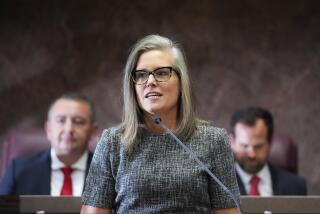School Choice Raises Some Tough Questions
- Share via
It’s easy to understand why some people are enchanted with the concept of “school choice” for their children [“Growing Voice for School Choice,” March 22].
If one school’s population is underperforming and considered “poor” by any standard, then it’s natural for parents of children placed in that particular school to look for options to send their kids elsewhere. But there are some inherent problems that come to mind when the mechanics and demographics of “school choice” are being formulated:
1. Cost. How are the necessary funds transferred to another public school, or who pays for movement into a private setting?
2. How much does this or that private school charge? Will that private school accept this student?
3. For the public school district that must account for expenditures per student, how do the supernumeraries balance the budget with students transferring here or there, private and public? How about keeping up with school personnel--number and kind--and cost parameters?
4. How about compulsory attendance laws? Who keeps the records? How are they accountable? How do school districts continue to be funded? How are payrolls satisfied?
5. Who oversees the teaching and credentialing standards of teachers and learning in the private schools?
Obviously, there are monumental issues that need addressing before “school choice” can become a viable alternative anywhere.
CHARLES R. BARR
Upland






